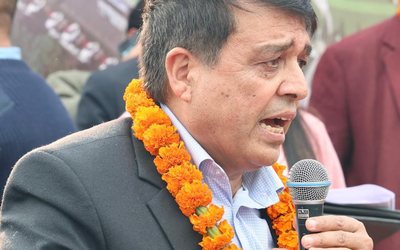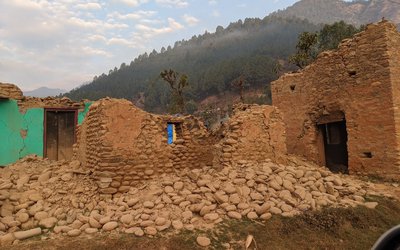
To date, more than 700,000 people around the world have died from the coronavirus disease (COVID-19). The pandemic has brought despair to countless families and caused unprecedented economic damage. The response has been significant: governments halted global travel, imposed nationwide lockdowns, quarantined large swaths of the population and scaled up medical care services. Governments have also funded the development and production of testing technology, in addition to the ongoing search for a vaccine.Link ADB
Yet, it is widely accepted that even when a vaccine is ready and effective, the virus is likely to persist given challenges associated with universal vaccination. The highly contagious nature of the virus means that where there are resurgences in cases, areas that had reopened will need to reimpose restrictions. This is the pattern that we are seeing playing out in several countries including Kazakhstan, India and Pakistan, the People’s Republic of China, and most recently Viet Nam.
So, we must learn to live with the virus. In this uncertain “new normal”, the prospects for rapid economic recovery are limited. A return to business as usual looks unlikely, too, and may not fully restore the economy. Focusing on high-impact segments of the economy is therefore an efficient approach to reaching a new normal.
Revitalizing four key areas can help developing Asia cope with the new normal and find a path to economic recovery.
First, revitalize the health sector. Due to the lack of long overdue investment, there is a significant gap not only in hospital infrastructure, but also at the primary care level including human resources necessary to staff effective health systems. In response to the pandemic, developing Asia has made record investments in strengthening the health sector. For example, the Indian government in April sanctioned approximately $1.9 billion to address the immediate gaps in strengthening the COVID-19 response by scaling up delivery of services. This was followed by the recent announcement of a major program to comprehensively strengthen the public health system. Bangladesh, Nepal, Pakistan, Uzbekistan, and Kazakhstan have adopted similar approaches in their pandemic response plans. There is also a sizable gap in health-related sectors such as pharmaceuticals and health insurance. Current levels of investment are insufficient to achieve Universal Health Coverage (UHC), however countries have committed to achieving UHC by 2030. The health sector has huge growth potential.
Second, revitalize the social protection sector which remains fragile and underfunded in developing Asia. In response to COVID-19, great efforts have been made to ensure that affected populations are covered by social safety nets. For example, in India the government announced a scheme to provide free food to 800 million people until November 2020, as well as direct cash transfers and free cooking gas to women, old and socially disadvantaged groups. The Pakistani government has allocated $1.2 billion for emergency cash transfer payments to 16.9 million poor households including daily wage workers. In Nepal, over one million poor families have been assisted by similar programs. In Uzbekistan, more than $70 million has been allocated to expand the social safety net for the poor and vulnerable. Yet, social protection schemes require long-term efforts to develop, including establishing disaggregated databases, registration and monitoring systems, and strong budget support. The development of the social security sector will help promote economic inclusion and sustainable growth.
Third, revitalize digital technology. The pandemic is transforming people's behavior and social norms. Working from home has completely changed people's mindset. Web-based collaboration and sharing platforms have been widely recognized for their effectiveness in facilitating remote collaboration and co-working, while webinars are successfully replacing physical seminars. More importantly, digital technology has been widely and effectively used to promote trade and tourism, support small and medium-sized enterprises and boost microfinance. It is being used increasingly in government, procurement, and education. Strategically developing digital technology will have a huge impact on the quality of growth.
Fourth, revitalize the global supply chain. During the great lockdown, the global supply chain virtually came to a standstill, resulting in incalculable job losses and economic damage around the world. For example, Bangladesh’s exports of apparel products were affected due to cancellation or suspension of orders, while international contracting projects in Pakistan, Nepal, Uzbekistan and Georgia were largely suspended due to the interruption of raw materials supply. The pandemic has highlighted the need for urgent reform of the global supply chain. We must pursue high-level multimodal transport, more effective trade facilitation, and stronger trade and supply chain financing mechanisms. In addition, further enhancing the international network of global supply chains will help to ensure that goods continue to flow in the face of disruptions. The global supply chain is the main artery of the world economy and its smooth flow is the basis of economic recovery.
Developing Asia has experienced many crises and disasters and has always bounced back. Following the Asian financial crisis, which severely hit the banking sector, the region adopted painful but necessary regulatory reforms of its systemically important financial institutions. These reforms introduced vital resilience into the Asian banking system, enabling it to survive the Global Financial Crisis a decade later. The COVID-19 pandemic should give us similar inspiration - the more severe the crisis, the greater the chances for reform and revitalization.
As we confront the new normal, a return to business as usual looks unlikely and may not fully restore the economy. Instead, a unique revitalization in these areas can offset losses and help realize developing Asia’s potential.















